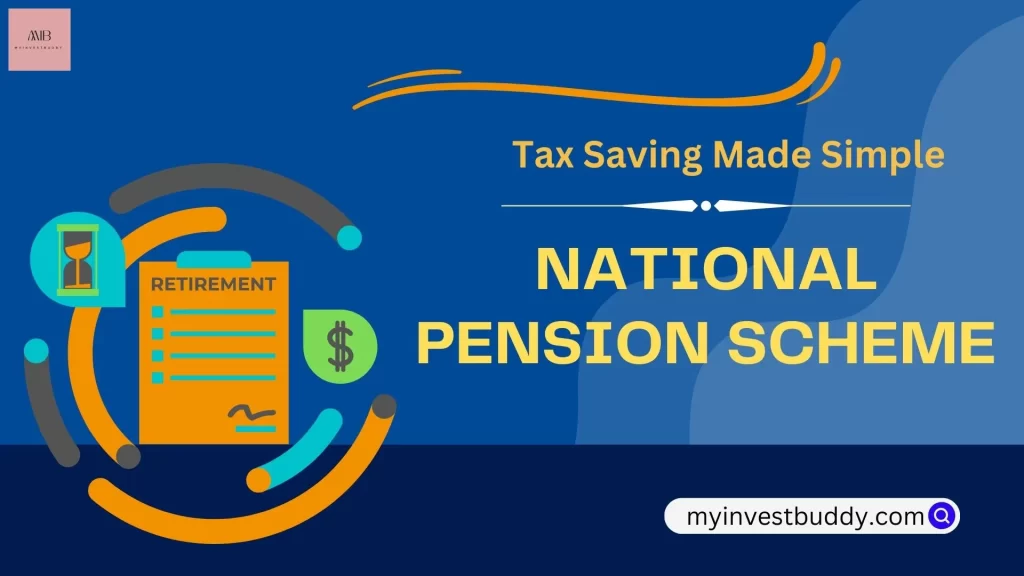The National Pension Scheme (NPS) is a pension scheme launched by the Government of India to provide retirement benefits to all citizens of India. It was introduced in January 2004 and is regulated by the Pension Fund Regulatory and Development Authority (PFRDA).
It is mandatory for central government employees and some state government employees to invest in NPS. As per further government directives, Private-sector employees will now have the option to choose between NPS and the Employees’ Provident Fund.
Under NPS, one can contribute a certain amount of money towards their pension regularly, the funds are then invested in various asset classes, like Equity, Debt, and T-bills to generate returns.
There are two types of accounts under the NPS
- Tier I account is a mandatory account that must be opened by all individuals who wish to enrol in the NPS. It is a long-term, non-withdrawable account that is meant for retirement savings.
- A Tier II account is a voluntary, withdrawable account that can be opened by individuals who already have a Tier I account. It can be used as a savings or investment account, but it cannot be used as a retirement savings account.
NPS Features at a Glance
Flexibility
NPS offers flexibility to an individual in terms of deciding how much to contribute and when to contribute. One can decide to invest as little or as much as they want and they can invest on a monthly, quarterly or annual basis. This also means that the benefits that an individual receives at the time of retirement are based on the contributions made by the individual and the returns earned on those contributions.
Liquidity
Once 3 years are crossed from the date of opting for NPS. One can withdraw 25% of the contribution made in case they have to incur the following expenses
- Purchase or Construction of First House
- Treatment of Critical illness for self, spouse, children or dependent parents
- Child’s Higher education or wedding
The point to note here is that the withdrawal is limited to 25% of the contribution made. For example, if you invest Rs.10,000 per month for the last 5 years, you are eligible to withdraw Rs. 1.5 Lakhs.
Investment Mix
As the NPS invest the fund in equity, Debt and Government securities. Different funds are offering varying levels of exposure to these three.
- Active-Choice Investment: Under this, you have the option to decide on the proportion of equity, debt and government securities. Here the only restriction is a maximum cap of 75% of investment towards equity
- Auto-Choice Investment: Here the Investment is done based on the age of the investor. By default, it will invest 50% of the fund in equity till the age of 35 years which then starts reducing at a rate of 2% per year till 55 to reduce the exposure to equity to 10% at the end. There are Aggressive and conservative options also available under this. In the case of an Aggressive life cycle, the equity starts at 75% while in the case of a conservative life cycle it is limited to 25%.
Tax Benefit
Contributions made to the NPS are eligible for tax deductions under Section 80CCD(1) of the Income Tax Act. The maximum deduction that an individual can claim under this section is 10% of their basic salary and dearness allowance, or 20% of their gross total income (whichever is lower). Subject to an overall ceiling of Rs. 1.5 Lakh. One can further save up to 50000 under section 80CCD (1B) over and above the 1.5Lakh ceiling. In addition, the returns earned on the contributions are tax-free.
Choice of Fund Manager
The NPS offers the option of choosing a pension fund manager, who will be responsible for managing the investments made under the NPS. You can select the one that best suits your needs and risk appetite.
List of Pension Fund Managers (PFMs)
- SBI Pension Fund Pvt Ltd.
- LIC Pension Fund Ltd
- UTI Retirement Solutions Ltd
- HDFC Pension Management Co. Ltd
- Kotak Mahindra Pension Fund Ltd
- ICICI Prudential Pension Fund Management Co. Ltd
- Tata Pension Management Ltd.
- Max Life Pension Fund Management Ltd
- Aditya Birla Sunlife Pension Management Ltd.
You can also check the latest list of PFMs here.
Exit Option
- The tire I: On retirement at the age of 60. Here you have to use 40% of the accumulated corpus to buy an annuity plan. The 60% can be withdrawn and is completely tax-free.
- In case you want to withdraw before the age of 60, You have to use 80% of the corpus to buy an annuity plan. And you can withdraw the rest 20% but, in this case, it will be taxed.
- The tire II: As it is a voluntary account you are free to withdraw the amount whenever you wish. There is no limit as well. But the point to remember is that withdrawal will be taxed as per your current income tax slab.
Also, read our previous articles to learn more about other tax-saving options available to you.
Do let us know in the comment what other tax-saving option you would like us to cover.

